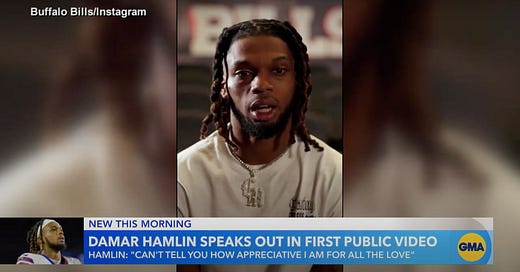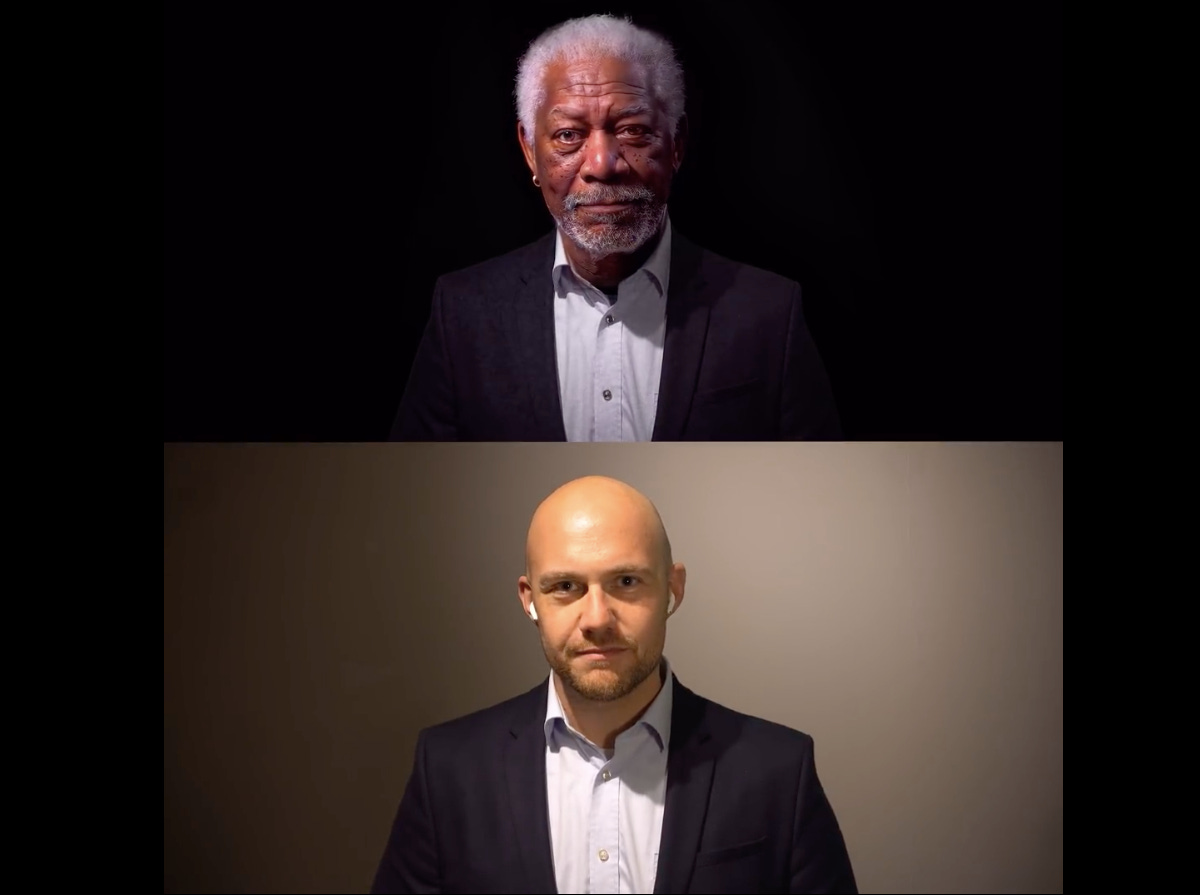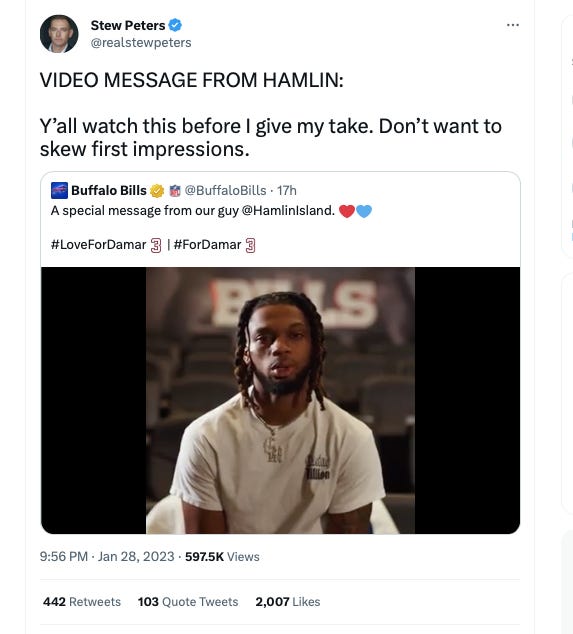Is Perception Reality?
Is Damar Hamlin’s testimonial video based in reality or synthetic reality? Per the DOD 2012 Civilian Casualty Mitigation Guidance, news messages can be widely distributed but not necessarily truthful.
In 1998 I leapt from the comforts of being a top-performing cardiovascular specialty representative with Pfizer into a new and growing segment of the marketing-agency side of the pharma business, web development and CGI - computer-generated imagery.
In 1998, pharma products didn’t all have their own websites (not even Viagra) and TV commercials were shot with real products and real people. While CGI was frequently used in Hollywood films, computer-generated imagery (CGI) was rarely used in commercial production due to extensive labor hours, rendering times that could take days, and astronomical costs, such as a 45 second mechanism of action video costing $200,000.
Fast forward to 2007 when I formed my own marketing and consulting agency, Varitage. Some of my first hires were CGI artists from SONY and the movie production industry.
As a marketing and communications expert, I know the value of recreating realistic imagery to tell a story and change perceptions. I was often complimented on the quality of the ‘photographs’ or ‘video footage’ my company created for my clients’ campaigns. Many times I was told the images or video footage was, ‘Stunning’ or ‘I couldn’t stop staring at the screen.’
Sometimes I would let a doctor or potential client in on a little secret about the videos and imagery by whispering in their ear, “The images aren’t real.”
It’s now 25 years later since I first began working with CGI artists to change physician and patient perceptions in order to get the results my clients wanted in the Big Pharma and Med Device industries.
Today, the pharmaceutical industry, Hollywood, consumer commercials, and news industry have not only completely changed, but have also merged with one another. When we watch Hollywood films or sci-fi thriller TV shows, we know characters and scenes are not real, because we are told they are not real.
But what if we are not told when characters and scenes are not real? Can we tell the difference between a real person and their background scene versus one created by computer generated imagery (CGI) and Ai generated voice and video testimony if we are not told they are fake?
This one-minute Morgan Freeman video may give you a new perspective on video testimonials and reality.
“I am not Morgan Freeman. What you see is not real. Well at least in contemporary terms it’s not….If you can hear, see, smell, or taste something, does that make it real? Or is it simply the ability to feel? I would like to welcome you the era of synthetic reality.” - Ai Morgan Freeman
On Saturday, January 28, 2023, a testimonial video of Damar Hamlin was released.
Is Damar Hamlin’s video based in reality or synthetic reality?
Keep reading with a 7-day free trial
Subscribe to The Kingston Report to keep reading this post and get 7 days of free access to the full post archives.





